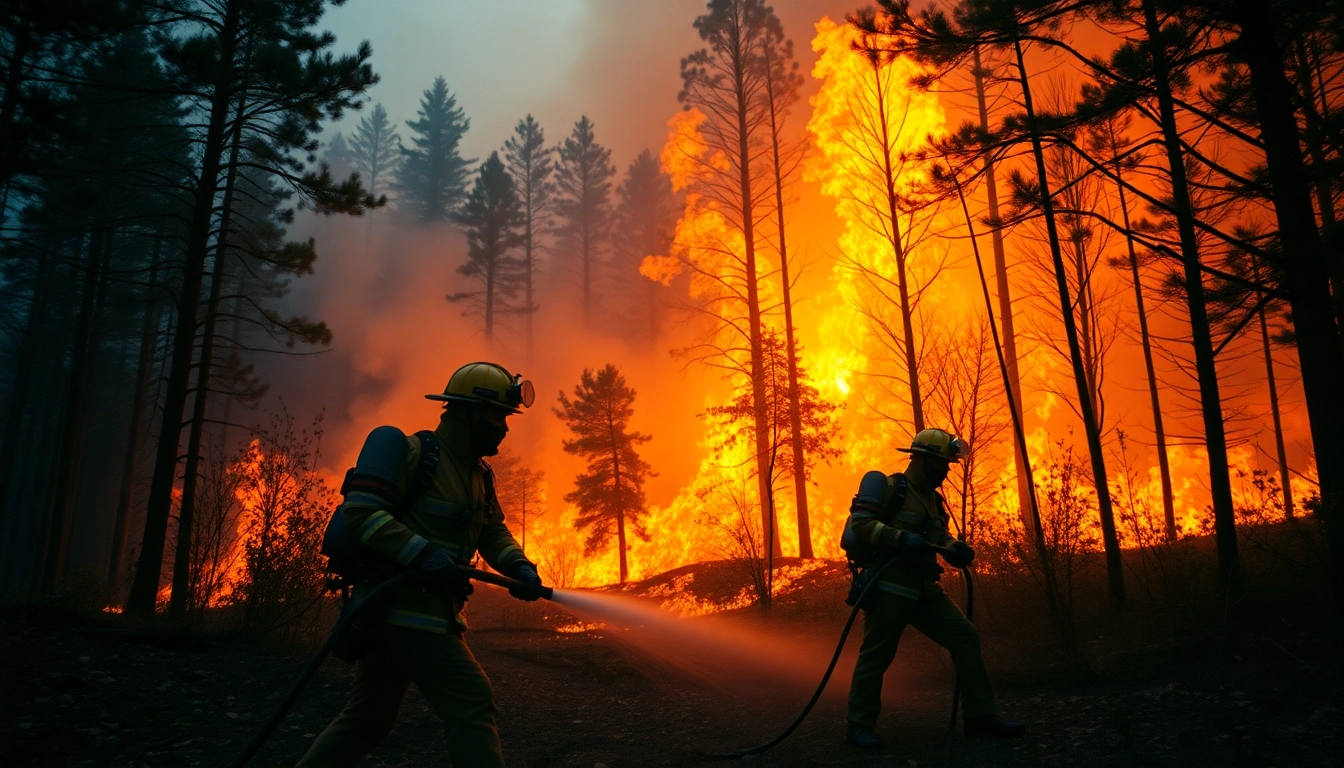What Are Wildfire Events?
Definition and Types of Wildfire Events
Wildfire events refer to uncontrolled fires that burn in wildland areas, including forests, grasslands, and other natural regions. Wildfires can be categorized into several types based on their behavior and the vegetation they affect.
The major types include:
- Surface Fires: These fires burn the surface litter, herbaceous plants, and sometimes the upper soil layer. They tend to have lower intensity and are often used in fire management to clear out underbrush.
- Crown Fires: Typically associated with strong winds and dry conditions, crown fires spread quickly through the treetops of forests, burning at higher intensities and posing significant challenges for fire suppression teams.
- Ground Fires: Burning in the organic material below the soil surface, ground fires can smolder for long periods and are often difficult to detect until they resurface as surface fires.
Causes of Wildfire Events
Wildfires can be ignited by various natural and human-induced causes:
- Natural Causes: Common ignition sources include lightning strikes, which can set off wildfires in dry conditions, as well as volcanic eruptions.
- Human Activities: Many wildfires are ignited by human actions, such as campfires left unattended, discarded cigarettes, power lines, or arson. In recent years, industrial activities have also been a significant factor.
Impact of Wildfire Events on Ecosystems
Wildfires can have profound effects on ecosystems. While they often result in immediate destruction of flora and fauna, many ecosystems have evolved with fire, supporting the idea that fire can also play a beneficial role:
- Ecological Balance: Wildfires can promote new growth by clearing out old vegetation and allowing sunlight to reach the forest floor, which can help rejuvenate certain plant species.
- Soil and Nutrient Impact: Fires can contribute to soil fertility by returning nutrients from burned plant material, enhancing the growth of future vegetation.
- Biodiversity: Some species, such as certain types of pine trees, rely on fire to reproduce, while others may benefit from the creation of new habitats after a fire event.
The Importance of Wildfire Events Awareness
Community Preparedness for Wildfire Events
Raising awareness about wildfire events is crucial for community preparedness. Here are some essential elements:
- Educational Programs: Communities can benefit from educational workshops that provide information on risk assessment, fire safety, and evacuation plans.
- Emergency Plans: Local governments and agencies should develop clear emergency response plans that detail evacuation routes and methods of communication during a wildfire event.
Education Initiatives Surrounding Wildfire Events
Educational initiatives can significantly impact wildfire preparedness. Campaigns such as Wildfire Awareness Month aim to inform communities about prevention and preparedness strategies, enhancing public knowledge about:
- Understanding Fire Risks: Teaching residents about the risks determined by fuel types, topography, and weather conditions that can increase wildfire likelihood.
- Safety Practices: Encouraging safe practices around flames, such as proper disposal of cigarettes and responsible management of outdoor burning.
Government Programs and Wildfire Events
Government initiatives play a critical role in managing wildfire events. Various programs focus on prevention, mitigation, and recovery:
- Resources for Fire Management: Programs often allocate funds for controlled burns, fire prevention projects, and educational initiatives.
- Integrated Fire Management Strategies: Governments may employ coordinated strategies that involve local agencies, fire departments, and land management organizations.
Tracking Wildfire Events: Tools and Resources
Real-time Monitoring Systems for Wildfire Events
Monitoring and tracking wildfires have become more efficient with the advancement of technology. Tools such as satellite imaging and real-time tracking apps provide essential information for:
- Detection: Early detection systems, like those operated by the National Interagency Fire Center, use satellite technology to monitor and report wildfires.
- Response Coordination: Real-time data can inform decision-making for firefighting efforts, optimizing resource allocation and strategies in response to ongoing wildfires.
Understanding Wildfire Maps
Wildfire maps are vital resources for visualizing current and historical fire events. These maps can indicate:
- Fire Perimeters: Mapping software can display the boundaries of active wildfires, giving crucial information for evacuation and safety planning.
- Risk Assessment: Maps that highlight areas susceptible to wildfires based on vegetation and weather conditions help inform fire prevention efforts.
Participating in Local Wildfire Events
Community engagement in wildfire programs fosters a proactive approach to preparedness. By participating in local events:
- Community Training: Residents can attend workshops and training on fire safety and emergency response.
- Collaboration with Agencies: Residents can engage with local fire departments and land management agencies to learn more and contribute to community safety.
Strategies for Mitigating Wildfire Events
Best Practices in Fire Management
Effective fire management strategies can significantly reduce the risk of wildfires. Some key practices include:
- Controlled Burns: Implementing prescribed burns helps manage underbrush and reduce fuel loads, lowering the chances of catastrophic fires.
- Defensible Space: Creating buffer zones around structures and properties reduces fire risk by clearing flammable materials within a designated distance from buildings.
Fire-Resilient Landscaping Techniques
Landscaping plays a crucial role in wildfire mitigation. Fire-resilient landscaping practices can include:
- Plant Selection: Choosing fire-resistant plants for landscaping, such as those with high moisture content, can help slow down or stop the spread of fire.
- Zone Landscaping: Utilizing a zoning approach that creates clear distinctions based on fire risk can effectively manage vegetation and minimize exposure to flames.
Community Engagement in Wildfire Prevention
Engaging communities in wildfire prevention initiatives is critical for enhancing overall safety. Efforts can include:
- Neighborhood Programs: Forming groups focused on fire preparedness, direct communication during emergencies, and local volunteer efforts is beneficial.
- Incentive Programs: Governments or organizations can implement incentives for homeowners to adopt fire mitigation practices on their properties.
Future of Wildfire Events: Challenges and Innovations
Advancements in Firefighting Technology
Technological innovation is reshaping wildfire management practices. Recent advancements include:
- Drones: The use of drones for surveillance and fire mapping provides real-time data and enhances firefighting capabilities.
- AI and Machine Learning: Tools that analyze data from various sources can predict fire behavior and help in planning effective suppression strategies.
Impact of Climate Change on Wildfire Events
Climate change has been a significant factor influencing wildfire frequency and severity. Key aspects include:
- Increased Temperatures: Warmer temperatures lead to drier conditions and can increase the likelihood of ignition and fire spread.
- Extreme Weather Events: Climate change contributes to more frequent droughts and severe weather patterns, further exacerbating wildfire risks.
Building Sustainable Practices Post-Wildfire Events
Recovery and sustainability post-wildfire are essential for ecosystem restoration and community resilience. Sustainable practices may involve:
- Restoration Projects: Initiatives to rehabilitate burned areas can support biodiversity and recover essential ecosystem services.
- Long-term Monitoring: Continuous assessment of fire-affected areas is crucial for understanding recovery processes and implementing effective management strategies.
For comprehensive information on wildfire events, visit wildfire events for resources tailored to enhance community awareness, preparedness, and response.



